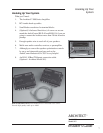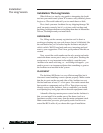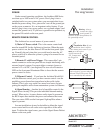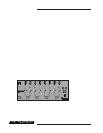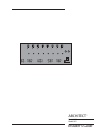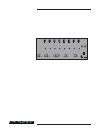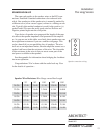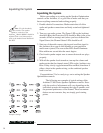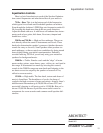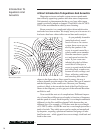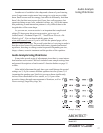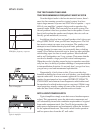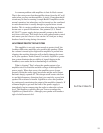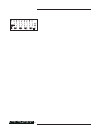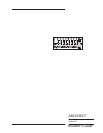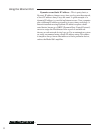
ARCHITECT
Model 960
Model 961
Installer’s Guide
™
Equalization Controls
Here is a brief introduction to each of the Speaker Optimiza-
tion control frequencies and what their affect on your music is.
75 Hz – Bass. This is at the bottom end of the frequencies
which typical in-wall and small bookshelf speakers can achieve.
Even though the Architect’s PFM filter cuts frequencies under 40
Hz, boosting this band more than 6 dB can cause distortion.
Adjust this band with care. A mild boost will enhance bass instru-
ments such as bass guitar, kick drum, floor toms, timpani and
double bass violas.
250 Hz and 700 Hz — High and low midrange. These con-
trols directly affect the sound of instruments and vocals. These
bands also determine the speaker’s presence (whether the music
sounds far away or close in). Small speakers often produce too
much midrange, so these controls are candidates for being turned
down slightly during your initial experimentation. Definitely
consider reducing 700 Hz if you are only using your extension
speakers for background music.
2500 Hz — Treble. Female vocals and the “edge” of instru-
ments such as guitars, snare drums, saxes, violins, etc. are found in
this range. If accentuated too much (by boosting this control)
sounds in the 2500 Hz range can seem harsh and fatiguing to the
ear due to excessive output by the speaker or because of live,
reflective room acoustics.
12 KHz — High treble. The fine detail, texture and sheen of
music is found here. The breathiness of vocals, the sheen of
cymbals, the high overtones of piano and strings. Actually, there’s
audible music information up to 20,000 Hz on some CD’s and
most adult’s hearing is still pretty good at 15,000 Hz. But we’ve
chosen 12,000 Hz because it provides more useful control to
compensate for room acoustics and common small-speaker defi-
ciencies.
Equalization Controls
15



